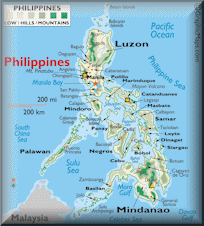-
-

Please Wait...
-
.com.ph Filipino Domain Country Information - .com.ph Philippines Country Information
.com.ph

Price and Requirements for .com.ph Domains
Registration Pricing
- 1 Year 54.00 USD
- 2 Years 105.84 USD
- 5 Years 256.50 USD
- 10 Years 486.00 USD
Application Fee
Registration Time Frame
Instant
Requirements
Yes Details Are Individual .com.ph domain registrations allowed?
Yes Details Company or legal entities registrations allowed for .com.ph?
No Details Are there requirements, documents, or information needed for .com.ph?
Yes Details Are some .com.ph domain names restricted?
No Details Does .com.ph domain have a special use?
No Details Other information I need to know about .com.ph?
No Details Are there any additional fees for .com.ph?
No Details Do I need a trademark/brand name to register .com.ph?
No Details WHOIS Privacy service available?
![]() Trustee / Proxy service offered? Fees?
No
Details
Trustee / Proxy service offered? Fees?
No
Details
.com.ph Philippines Country Information
The Philippines, officially known as the Republic of the Philippines, is a sovereign country in Southeast Asia in the western Pacific Ocean. To its north across the Luzon Strait lies Taiwan. West across the South China Sea sits Vietnam. The Sulu Sea to the southwest lies between the country and the island of Borneo, and to the south the Celebes Sea separates it from other islands of Indonesia. It is bounded on the east by the Philippine Sea. Its location on the Pacific Ring of Fire and its tropical climate make the Philippines prone to earthquakes and typhoons but have also endowed the country with natural resources and made it one of the richest areas of biodiversity in the world. An archipelago comprising 7,107 islands, the Philippines is categorized broadly into three main geographical divisions: Luzon, Visayas, and Mindanao. Its capital city is Manila.
With an estimated population of about 94 million people, the Philippines is the world's 12th most populous country. An additional 11 million Filipinos live overseas. Multiple ethnicities and cultures are found throughout the islands. In prehistoric times, Negritos were some of the archipelago's earliest inhabitants. They were followed by successive waves of Austronesian peoples who brought with them influences from Malay, Hindu, and Islamic societies. Trade introduced Chinese cultural influences which remain to this day.
The Philippines has been part of several empires: the Spanish Empire during the age of Imperialism, the United States after the Spanish-American War of 1898, and the Japanese Empire during World War II, until the official Philippine independence in 1945.
The arrival of Ferdinand Magellan in 1521 marked the beginning of an era of Spanish interest and eventual colonization. In 1543, Spanish explorer RuyLópez de Villalobos named the archipelago Las Islas Filipinas in honor of Philip II of Spain. Miguel López de Legazpi arrived in the Philippines in 1565 and consolidated Spanish rule in the islands, which remained a colony of Spain for more than 300 years.
Manila became the Asian hub of the Manila–Acapulco galleon fleet. Christianity was widely adopted. As the 19th century gave way to the 20th, there followed in quick succession the Philippine Revolution, which spawned the short-lived First Philippine Republic; the Spanish-American War; and the Philippine–American War. In the aftermath, the United States emerged as the dominant power. Aside from the period of Japanese occupation, the United States retained sovereignty over the islands until the end of World War II when the Philippines gained independence. The United States bequeathed to the Philippines the English language and a stronger affinity for Western culture. Since independence the Philippines has had an often tumultuous experience with democracy, with popular "people power" movements overthrowing a dictatorship in one instance but also underlining the institutional weaknesses of its constitutional republic in others.
The Philippines is an archipelago of 7,107 islands with a total land area, including inland bodies of water, of approximately 300,000 square kilometers (120,000 sq mi). Its 36,289 kilometers (22,549 mi) of coastline makes it the country with the 5th longest coastline in the world. It is located between 116° 40', and 126° 34' E. longitude and 4° 40' and 21° 10' N. latitude and is bordered by the Philippine Sea to the east, the South China Sea to the west, and the Celebes Sea to the south. The island of Borneo is located a few hundred kilometers southwest and Taiwan is located directly to the north. The Moluccas and Sulawesi are located to the south-southwest and Palau is located to the east of the islands.
.com.ph Philippines Domain Name - Country Information
| Country Domain | Philippines Domain Name .com.ph |
|---|---|
| Country Information | Philippines Domain Country Information .com.ph |
| TLD Bulk & Advanced Search | Philippines Bulk Domain Registration .com.ph |
| WhoIs Server | .com.ph Whois Server Information |
| Domain Renewals | Renewal Filipino Domain .com.ph |
| Domain Transfer | Transfer Domain .com.ph |
| Domain Hosting | .com.ph Philippines Web Hosting |
| SSL Certificates | SSL Certificates |
| Email Services | .com.ph Philippines Email Services |
| Domain FAQ | .com.ph Domain Registration FAQ |
Philippines Country Information Search Terms
Filipino Domain Country Information Filipino Domain Registrar Filipino World Wide Domain Registration Filipino Country Code Top Level Domain .com.ph Domain Information Filipino Country Information Philippines Country Information












